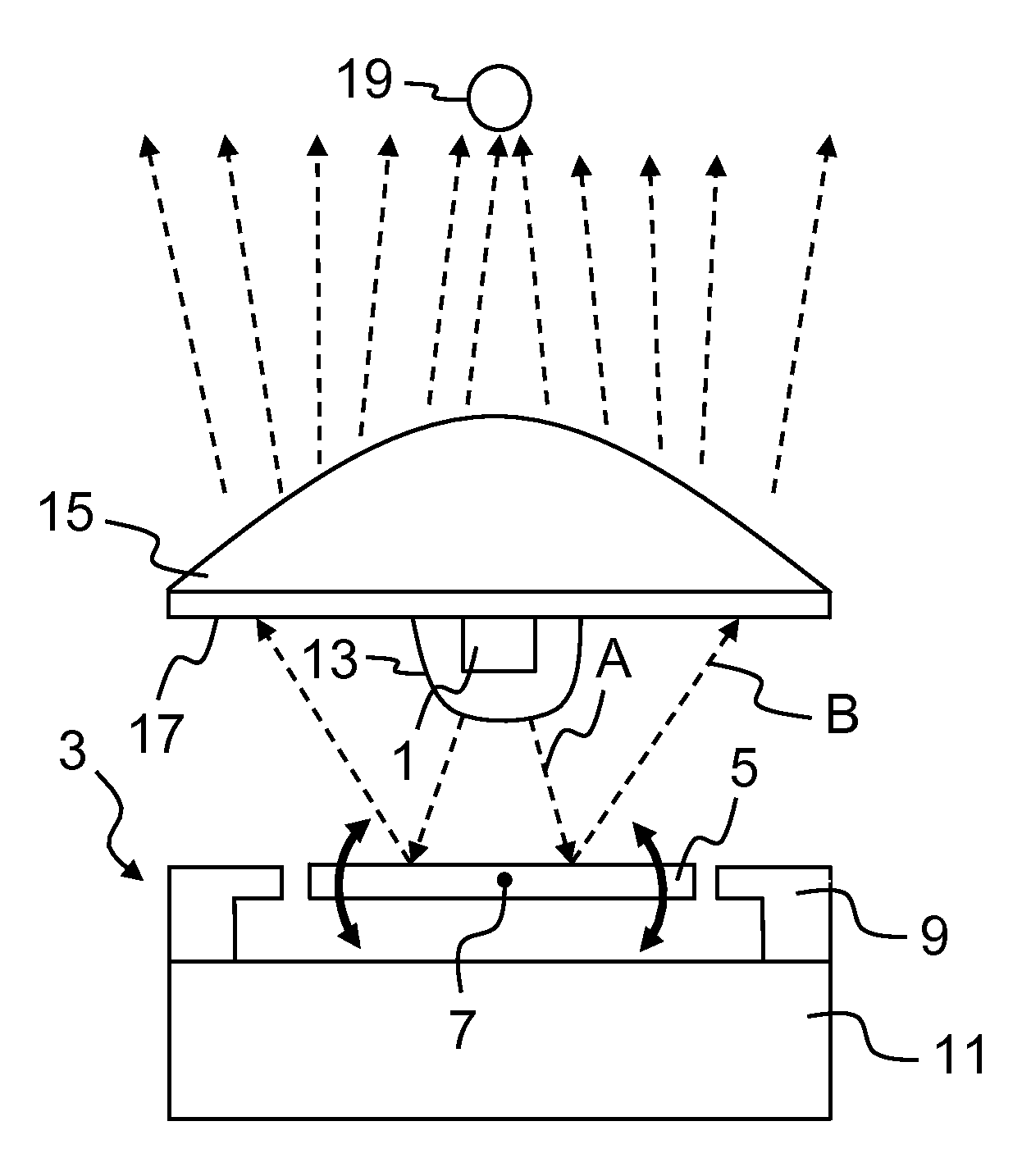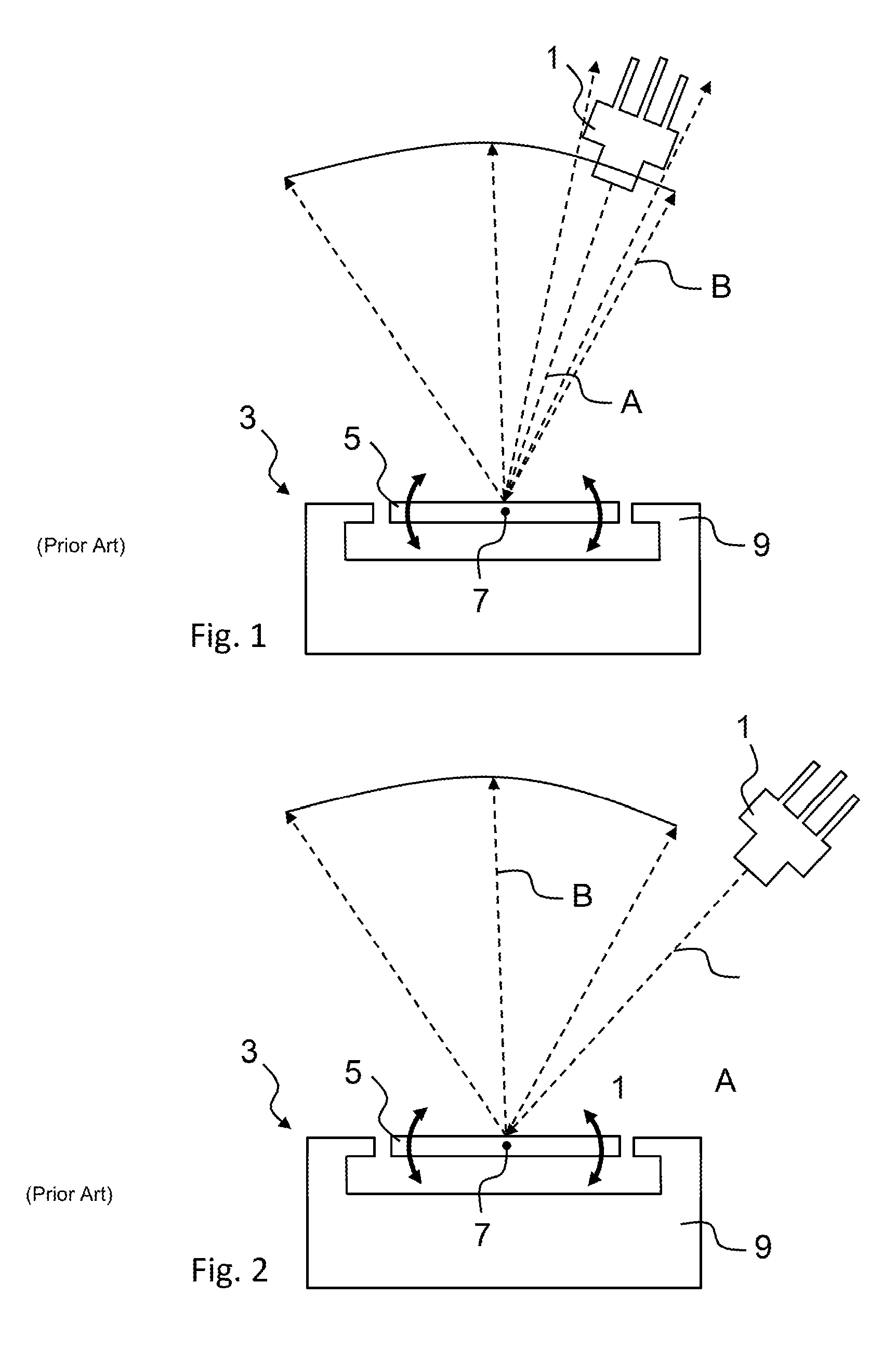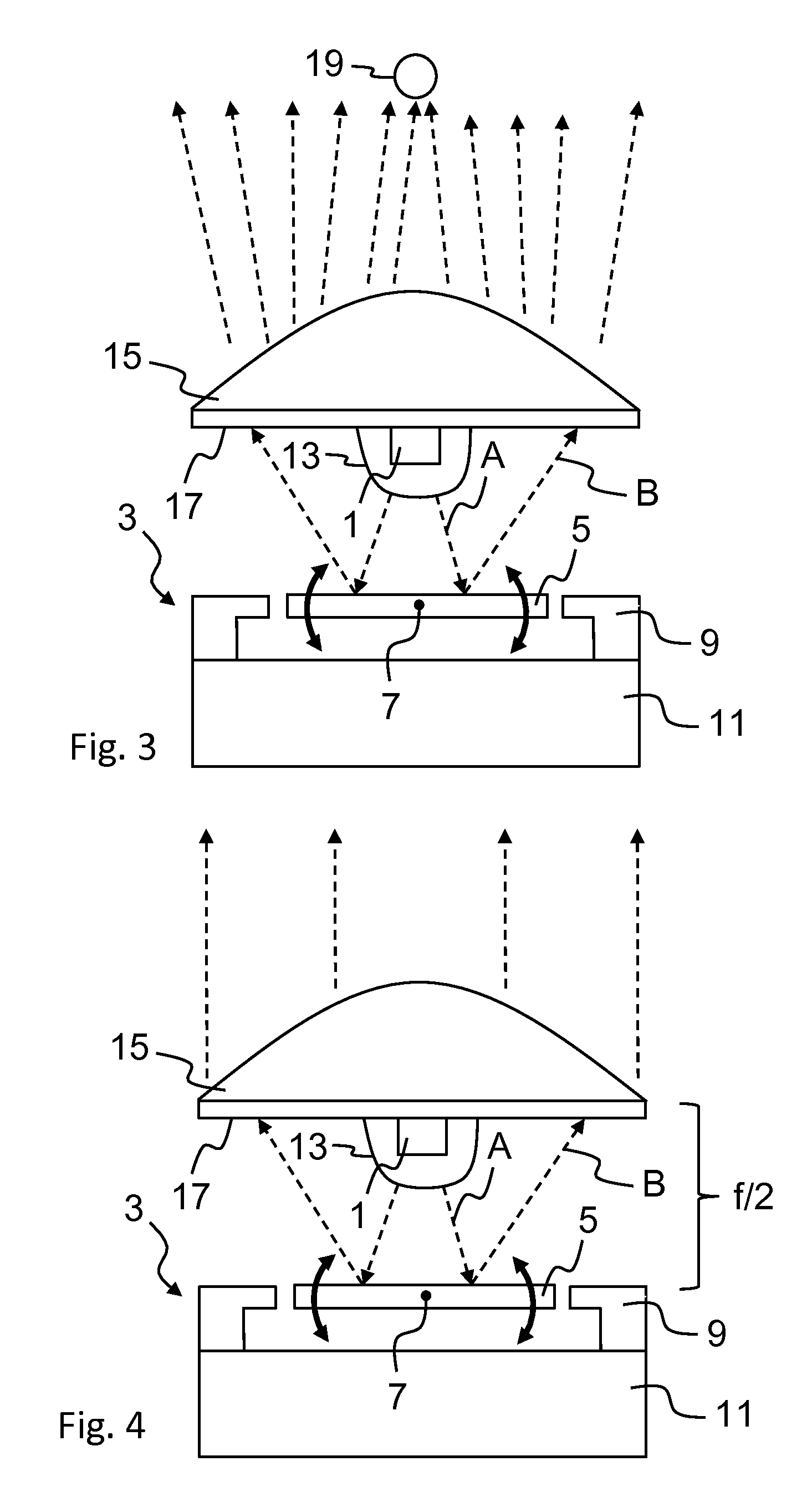Compact illumination system
a compact, light-emitting technology, applied in the direction of lighting and heating apparatus, instruments, lenses, etc., can solve the problems of obstructing some of the reflection light, occluded or non-illuminated spots behind the light source, and the arrangement of fig. 1 is also not optimal in terms of space use, so as to achieve high production volume, low cost, and high yield of manufacturing process
- Summary
- Abstract
- Description
- Claims
- Application Information
AI Technical Summary
Benefits of technology
Problems solved by technology
Method used
Image
Examples
Embodiment Construction
[0044]An embodiment of the present invention will now be described in detail with reference to the attached figures. Identical or corresponding functional and structural elements which appear in the different drawings are assigned the same reference numerals.
[0045]FIG. 3 is a schematic cross-sectional view illustrating an exemplary illumination or lighting system or device according to an embodiment of the present invention. This arrangement may be used for example in photographic flash applications or in 3D sensing solutions used for example in gesture sensing applications and / or three dimensional mapping of an object or the environment. FIG. 1 shows a light source 1. Various types of light sources and packaging may be used; light source 1 may be for example an edge emitting laser diode, a vertical-cavity surface-emitting laser (VCSEL), a light emitting diode (LED), a resonant-cavity LED, a micro-LED or an array of such light sources. The light source may be a monochromatic laser l...
PUM
 Login to View More
Login to View More Abstract
Description
Claims
Application Information
 Login to View More
Login to View More - R&D
- Intellectual Property
- Life Sciences
- Materials
- Tech Scout
- Unparalleled Data Quality
- Higher Quality Content
- 60% Fewer Hallucinations
Browse by: Latest US Patents, China's latest patents, Technical Efficacy Thesaurus, Application Domain, Technology Topic, Popular Technical Reports.
© 2025 PatSnap. All rights reserved.Legal|Privacy policy|Modern Slavery Act Transparency Statement|Sitemap|About US| Contact US: help@patsnap.com



